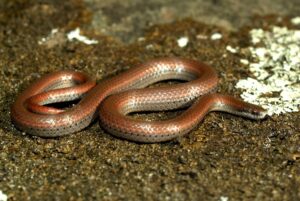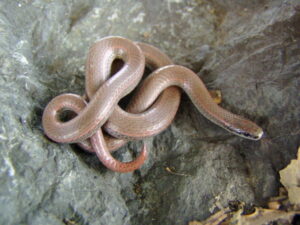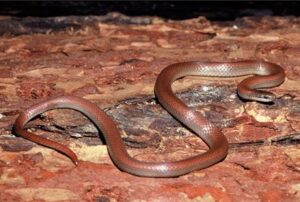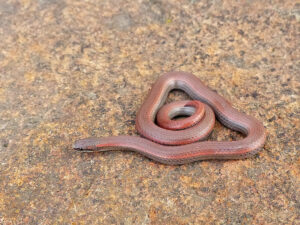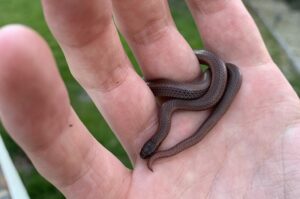The sharp-tailed snake, common sharp-tailed snake, or sharptail snake, is a native of the Western United States and British Columbia. Also known by the names Pacific brown snake and gentle brown snake, it is a small, thin, diurnal colubrid with a small head and a sharp, pointed end to its tail. Its preference for higher moisture levels and cooler temperatures makes it active at different times of the year and in different microhabitats than most other snakes.
Scientific Classifications
- Suborder:Serpentes
- Family:Colubridae
- Genus:Contia
- Species:C. tenuis
Conservation Status
Description
Size
The adults grow to a total size of 12-18 in (30-46 cm), including the tail.
Color and Appearance
A distinguishing feature of the snake is its sharp tail spine – the projecting tip of the last tail vertebra. The spine is non-toxic and cannot cause any injury to humans. It is sued to stabilize small prey, for consumption.
The color of the dorsal surface, covered with smooth, shiny scales, ranges from grayish brown to brown to brick red. Few specimens are even peachy-orange and bubble-gum pink. The ventral surface has a striking pattern of black and white crossbars.
Are They Dangerous to Humans
The shy and secretive snake is non-venomous and can cause no harm to humans. It can bite, but its teeth are so small that they can only cause a mild pinching sensation. When confronted by a human, it may roll into a ball and remain still, resembling a worm in its appearance.
Sharp-tailed Snakes at a Glance
Distribution
In the US, it lives in Oregon, California, and Washington. In British Columbia, Canada, it occurs in Southern Vancouver Island around Victoria, and Pemberton
Habitat
The species inhabits moist, well-shaded forest habitats dominated by redwoods and Douglas fir. It also lives in mixed woodlands with conifers and oaks.
The sharp-tailed snake is mostly encountered under logs and rocks and is almost never found in the open. It persists in urban areas with appropriate cover. It burrows into cracks in the clay or soft soil and can be seen by people removing concrete or digging in the garden.
Lifespan
The sharptail snake has a lifespan of up to 10 years.
Predators
It is eaten by small mammals like cats, diurnal birds like Steller’s Jays, and other snakes.
Diet
Its main food is slugs and their eggs. Its long teeth are equipped to hold on to slippery prey.
Reproduction
Oviparous (lays eggs that hatch outside the body)
An adult female lays 4-26 eggs in the summer, in a burrow or underground. Each hatchling measures 3-4 in (7.6-10.2 cm) in total length.
Source
projectnoah.org, content.eol.org, sararegistry.gc.ca, flickr.com, pinglelist.org, reddit.com

